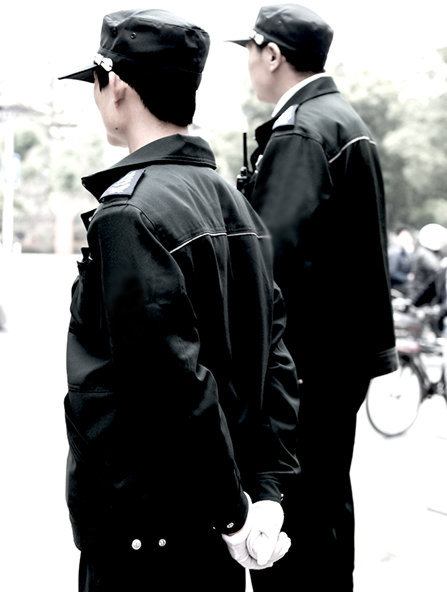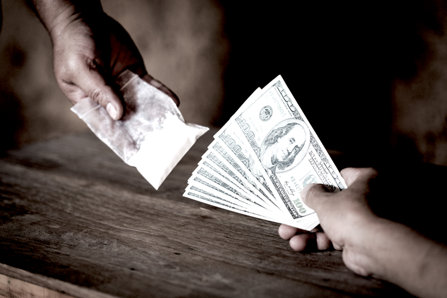China Restricts Sale of Fentanyl: Will This Reduce Overdoses in America?
The news was released as a one-sentence comment in a White House press release about President Trump’s meeting with Chinese President Xi Jinping:
“President Xi…has agreed to designate Fentanyl as a Controlled Substance, meaning that people selling Fentanyl to the United States will be subject to China’s maximum penalty under the law.”

“President Xi…has agreed to designate Fentanyl as a Controlled Substance, meaning that people selling Fentanyl to the United States will be subject to China’s maximum penalty under the law.”
The rest of the release discussed trade agreements.
What does this change in Chinese law really mean and will it help the United States reduce the number of lives lost to fentanyl?
Why is Fentanyl Coming from China?
Fentanyl is the generic name for an extremely strong synthetic opioid painkiller. It has long been prescribed to help patients with end-of-life pain or cancer pain that nothing else would relieve. It is administered in forms that make it hard to abuse these drugs because abusing them would very likely lead to death. Fentanyl patches are used to deliver the drug over a 72-hour period. Slow-dissolving fentanyl lollipops are also used for breakthrough cancer pain.
Fentanyl has been manufactured by legitimate pharmaceutical companies for fifty years. Small amounts of this drug have been diverted to the illicit market, as has happened with other drugs people may become addicted to. Then, in 2005, Americans suddenly began dying from fentanyl overdoses. More than one thousand people died in next two years. In response, chemicals needed to produce fentanyl were restricted and an illicit pharmaceutical lab in Toluca, Mexico was destroyed. The fentanyl deaths dropped to the level usually seen from diverted medical supplies.

In March 2015, the DEA issued urgent notifications about illicitly-manufactured fentanyl that was again being found on the market. Most of the seizures occurred in the Eastern United States where heroin is mostly sold in powder form. It’s easy to mix a little fentanyl into powdered heroin and harder to mix it into the black tar heroin found on the West Coast. Drug investigations revealed that most of the fentanyl was being manufactured in chemical companies in China.
The financial motive is obvious. As a synthetic, fentanyl production does not rely on a poppy crop. Twenty-five grams of fentanyl costs about $800 to produce. A single dose of fentanyl measures less than one milligram, or a thousandths of a gram. Looking at it another way, if you buy $1000 worth of heroin, chop it up and sell it retail, you might make $8,000. Doing the same thing with fentanyl, you could make as much as $7.8 million.
Earlier Chinese Legislation Related to Fentanyl
In a 2017 blog post on narconon.org, we took a look at an earlier legislative action taken by the Chinese government to outlaw four types of fentanyl: carfentanil, furanyl fentanyl, acrylfentanyl and valeryl fentanyl. In fact, there are dozens of forms of fentanyl. By outlawing these four kinds of fentanyl, the government gained the power to shut down manufacturers and seize shipments headed toward the United States. But all a manufacturer would have to do is manipulate the fentanyl molecule slightly until it became a different drug, an “analogue” to fentanyl. Maybe they’d make alpha-methylfentanyl, thiofentanyl or beta-hydroxyfentanyl, all forms of this deadly drug that have been found in the U.S.
Chinese Shipments to the U.S. and Mexico
Fentanyl was often shipped directly to buyers using package delivery services, including the U.S. mail. The recipients would mix the fentanyl with heroin or other drugs or sell it as fentanyl. Or they might acquire a press and turn it into counterfeit prescription drugs, mimicking pills like OxyContin.

Because of the drug’s potency, fentanyl could have an astronomical street value. A seizure of 70 pounds of fentanyl in Boston in October 2018 was valued at $28.8 million. Fentanyl is also so much easier to smuggle. One kilogram of fentanyl has the same potency as 50 kilos of heroin. Therefore, much smaller shipments of fentanyl can result in vastly more profits than dealing in heroin.
Buyers have been able to order fentanyl from the websites of these illicit manufacturers. In August 2018, a father and son living in Shanghai, China, were indicted for selling fentanyl to buyers in Ohio. Two Ohians died as a result of their shipments. The indictment claimed they had sold carfentanil, acetyl fentanyl, furanyl fentanyl and more than 200 other drugs to buyers in 25 countries.
China also ships precursor chemicals to Mexico. Precursor chemicals are those needed to produce a specific product, in this case, fentanyl. Mexican drug traffickers turn these chemicals into fentanyl and traffic it to the U.S. and other countries.
So Will Making Fentanyl and Its Analogues “Controlled” Really Help?
When a drug is “controlled,” that means that its manufacture, sale and use are strictly controlled by law. Detailed records must be kept when it is manufactured, shipped or used and those records can be inspected by law enforcement at any time. These drugs may have a medical use but they also have a high potential for abuse.
But will it help? It might. But probably not in a very lasting way. When the Toluca lab was closed, fentanyl overdose deaths dropped to very small numbers. But a single lab in Toluca, Mexico was the only supplier of the drug that ravaged the Eastern United States. Now, we could have dozens of labs across China manufacturing this drug.
Some of the obstacles that could be present in the current situation are as follows:
- Chinese officials must be able to locate these illicit labs.
- If any Chinese law enforcement are bribed to keep these labs concealed, they will be harder to find.
- Fentanyl manufacturing has also been found in India, Pakistan and Thailand. If China’s manufacturing is reduced or even eliminated, the usual pattern with drug manufacturing and trafficking is that someone else picks up the slack.
- Heightened law enforcement activity can reduce the availability of addictive drugs on the market and this can result in drug shortages. These shortages are always temporary.
- A drug shortage may not end up saving many lives. A person who is desperate for an addictive substance in short supply may simply turn to some other substance in the meantime.
Around the world, law and drug enforcement personnel have come to the realization that they’ll never be able to “arrest their way out of the problem.” Drug enforcement, seizures and prosecution are still an essential part of the solution. But no one should count on these methods to eliminate our problem with addictive substances. Effective drug rehabilitation and workable drug prevention education will always be vital actions needed to save the lives of our loved ones.


 ®
®